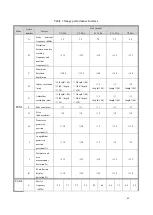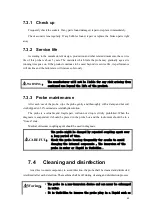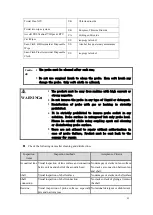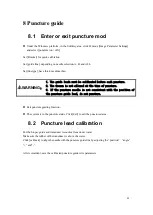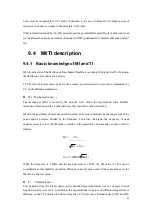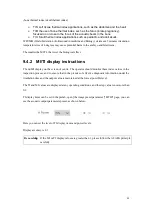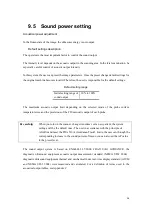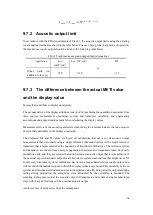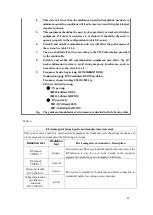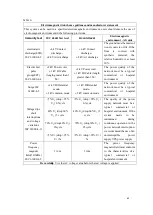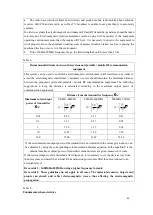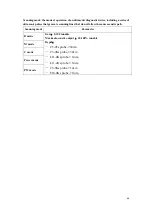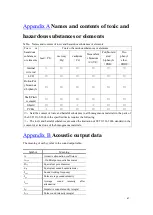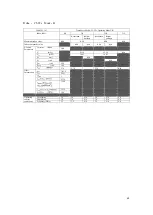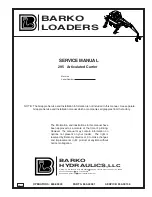
58
)
10
/
3
.
0
-
(
10
z
f
water
atten
c
I
I
=
9.7.2 Acoustic output limit
In accordance with the FDA requirements of Track 3, the acoustic output limits using the derating
(or attenuation) method, as shown in the table below. The use of any probe in any mode of operation,
the maximum acoustic output should be listed in the following table limits.
FDA 3 Track maximum sound output limit (attenuation)
Application
I
spta.3
(mW/cm
2
)
I
sppa.3
(W/cm
2
)
or
MI
Other
parts
(in
addition to the eye)
720
≤ 190
≤ 1.9
9.7.3 The difference between the actual MI/TI value
and the display value
Factors that contribute to display uncertainty
The net uncertainty of the displayed indices is derived by combining the quantified uncertainty from
three sources: measurement uncertainty, system and transducer variability, and engineering
assumptions and approximations made when calculating the display values.
Measurement errors of the acoustic parameters when taking the reference data are the major source
of error that contributes to the display uncertainty.
The displayed MI and TI values are based on calculations that use a set of acoustic output
measurements that were made using a single reference ultrasound system with a single reference
transducer that is representative of the population of transducers of that type. The reference system
and transducer are chosen from a sample population of systems and transducers taken from early
production units, and they are selected based on having an acoustic output that is representative of
the nominal expected acoustic output for all transducer/system combinations that might occur. Of
course every transducer/system combination has its own unique characteristic acoustic output, and
will not match the nominal output on which the display estimates are based. This variability between
systems and transducers introduces an error into displayed value. By doing acoustic output sampling
testing during production, the amount of error introduced by the variability is bounded. The
sampling testing ensures that the acoustic output of transducers and systems being manufactured
stays within a specified range of the nominal acoustic output.
Another source of error arises from the assumptions.


